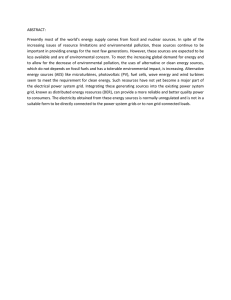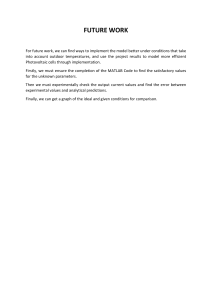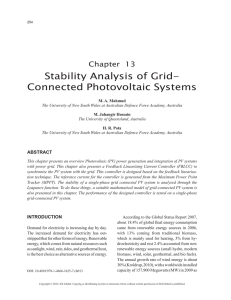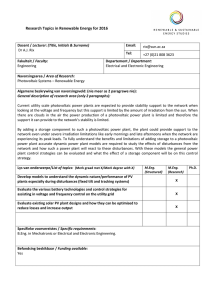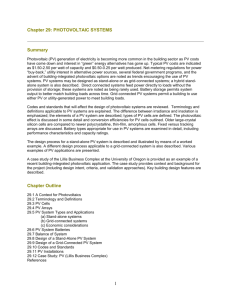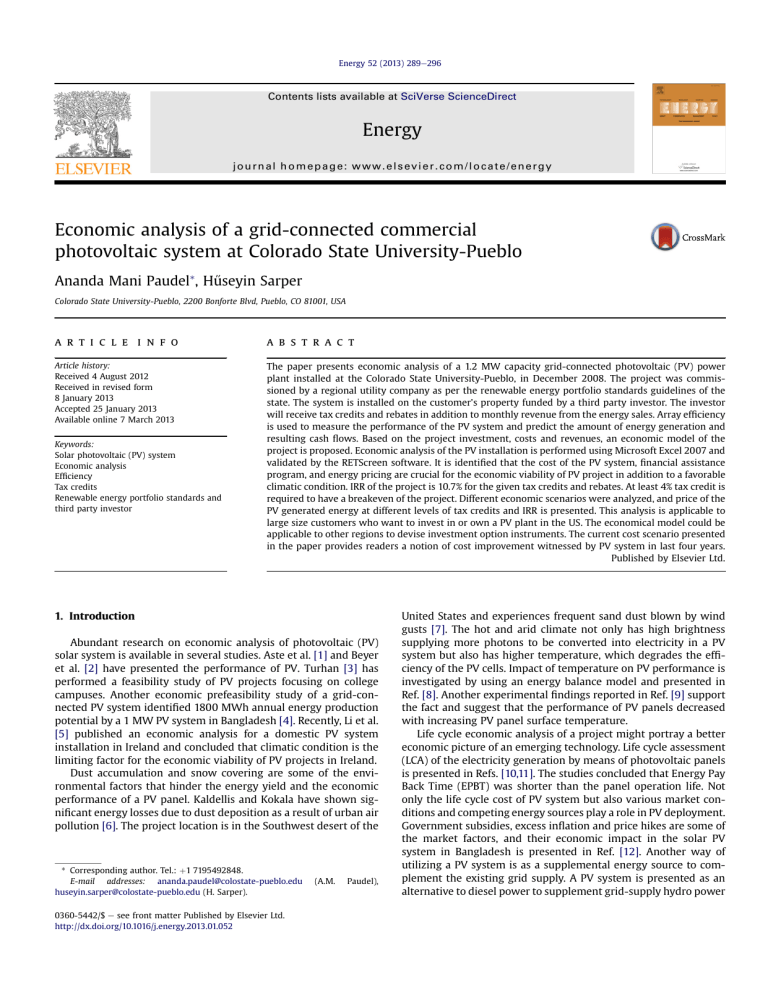
Energy 52 (2013) 289e296 Contents lists available at SciVerse ScienceDirect Energy journal homepage: www.elsevier.com/locate/energy Economic analysis of a grid-connected commercial photovoltaic system at Colorado State University-Pueblo } seyin Sarper Ananda Mani Paudel*, Hu Colorado State University-Pueblo, 2200 Bonforte Blvd, Pueblo, CO 81001, USA a r t i c l e i n f o a b s t r a c t Article history: Received 4 August 2012 Received in revised form 8 January 2013 Accepted 25 January 2013 Available online 7 March 2013 The paper presents economic analysis of a 1.2 MW capacity grid-connected photovoltaic (PV) power plant installed at the Colorado State University-Pueblo, in December 2008. The project was commissioned by a regional utility company as per the renewable energy portfolio standards guidelines of the state. The system is installed on the customer’s property funded by a third party investor. The investor will receive tax credits and rebates in addition to monthly revenue from the energy sales. Array efficiency is used to measure the performance of the PV system and predict the amount of energy generation and resulting cash flows. Based on the project investment, costs and revenues, an economic model of the project is proposed. Economic analysis of the PV installation is performed using Microsoft Excel 2007 and validated by the RETScreen software. It is identified that the cost of the PV system, financial assistance program, and energy pricing are crucial for the economic viability of PV project in addition to a favorable climatic condition. IRR of the project is 10.7% for the given tax credits and rebates. At least 4% tax credit is required to have a breakeven of the project. Different economic scenarios were analyzed, and price of the PV generated energy at different levels of tax credits and IRR is presented. This analysis is applicable to large size customers who want to invest in or own a PV plant in the US. The economical model could be applicable to other regions to devise investment option instruments. The current cost scenario presented in the paper provides readers a notion of cost improvement witnessed by PV system in last four years. Published by Elsevier Ltd. Keywords: Solar photovoltaic (PV) system Economic analysis Efficiency Tax credits Renewable energy portfolio standards and third party investor 1. Introduction Abundant research on economic analysis of photovoltaic (PV) solar system is available in several studies. Aste et al. [1] and Beyer et al. [2] have presented the performance of PV. Turhan [3] has performed a feasibility study of PV projects focusing on college campuses. Another economic prefeasibility study of a grid-connected PV system identified 1800 MWh annual energy production potential by a 1 MW PV system in Bangladesh [4]. Recently, Li et al. [5] published an economic analysis for a domestic PV system installation in Ireland and concluded that climatic condition is the limiting factor for the economic viability of PV projects in Ireland. Dust accumulation and snow covering are some of the environmental factors that hinder the energy yield and the economic performance of a PV panel. Kaldellis and Kokala have shown significant energy losses due to dust deposition as a result of urban air pollution [6]. The project location is in the Southwest desert of the * Corresponding author. Tel.: þ1 7195492848. E-mail addresses: ananda.paudel@colostate-pueblo.edu huseyin.sarper@colostate-pueblo.edu (H. Sarper). 0360-5442/$ e see front matter Published by Elsevier Ltd. http://dx.doi.org/10.1016/j.energy.2013.01.052 (A.M. Paudel), United States and experiences frequent sand dust blown by wind gusts [7]. The hot and arid climate not only has high brightness supplying more photons to be converted into electricity in a PV system but also has higher temperature, which degrades the efficiency of the PV cells. Impact of temperature on PV performance is investigated by using an energy balance model and presented in Ref. [8]. Another experimental findings reported in Ref. [9] support the fact and suggest that the performance of PV panels decreased with increasing PV panel surface temperature. Life cycle economic analysis of a project might portray a better economic picture of an emerging technology. Life cycle assessment (LCA) of the electricity generation by means of photovoltaic panels is presented in Refs. [10,11]. The studies concluded that Energy Pay Back Time (EPBT) was shorter than the panel operation life. Not only the life cycle cost of PV system but also various market conditions and competing energy sources play a role in PV deployment. Government subsidies, excess inflation and price hikes are some of the market factors, and their economic impact in the solar PV system in Bangladesh is presented in Ref. [12]. Another way of utilizing a PV system is as a supplemental energy source to complement the existing grid supply. A PV system is presented as an alternative to diesel power to supplement grid-supply hydro power
